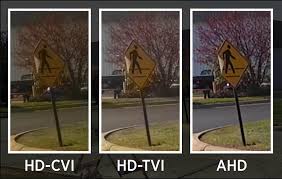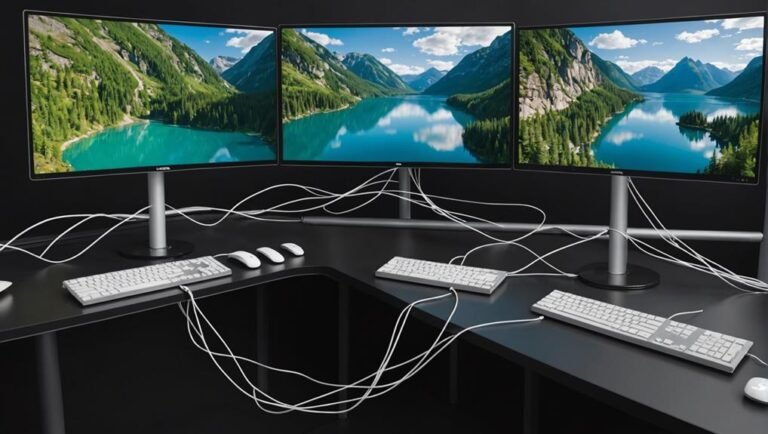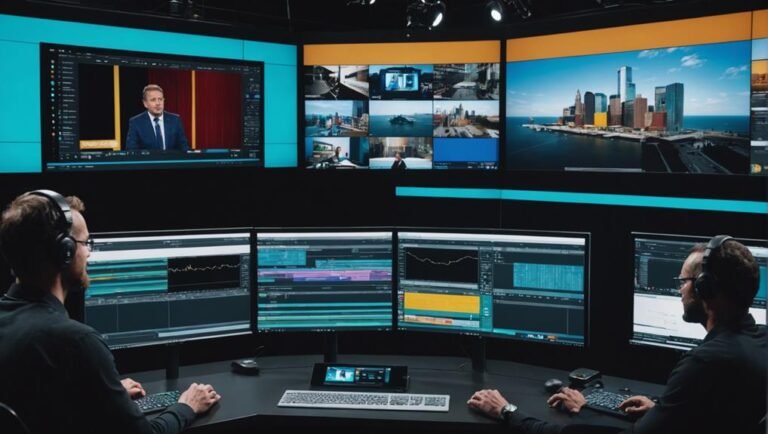When comparing AHD, TVI, and CVI camera systems, focus on three main differences: transmission methods, compatibility, and performance. AHD compresses video at the camera, reducing interference over long distances. TVI sends uncompressed video with built-in filters to counter interference, while CVI transmits both analog and digital signals with minimal delay. Concerning compatibility, TVI integrates best with various DVRs. Performance-wise, AHD supports up to 8MP, TVI up to 4K, and CVI up to 4MP. AHD and TVI excel in low light and offer longer transmission ranges. Keep going to discover more nuanced details.
Transmission Methods
When comparing AHD, TVI, and CVI, you’ll find that each uses different transmission methods to deliver high-definition video over coaxial cables. Understanding these methods can give you the freedom to choose the system that best suits your needs.
AHD, or Analog High Definition, compresses the video at the camera and transmits it over coaxial cables. This method is great for minimizing signal interference, giving you a clearer picture even over longer distances. With AHD, you won’t need to worry too much about the quality degrading due to electrical noise or other common sources of interference.
TVI, or Transport Video Interface, uses digital transmission methods to send uncompressed video signals over coaxial cables. This approach ensures that the video quality remains consistently high, but it can be more susceptible to signal interference. To counteract this, TVI systems often include built-in filtering mechanisms to maintain video integrity.
CVI, or Composite Video Interface, transmits both analog and digital signals over coaxial cables. This hybrid method offers flexibility but can be prone to signal interference if not properly installed. However, the ability to transmit high-definition video without significant delay makes CVI an attractive option for many users.
Compatibility
Choosing the right system involves understanding how AHD, TVI, and CVI differ regarding compatibility with other devices and existing infrastructure. You don’t want to be tied down by a system that limits your ability to upgrade or expand. Here’s how these technologies measure up:
- AHD (Analog High Definition): AHD provides decent signal integration with older analog systems, making it a versatile choice if you’re working with existing analog setups. However, it may not always deliver seamless device interconnectivity with newer digital devices.
- TVI (Transport Video Interface): TVI excels in device interconnectivity, allowing smooth integration with various DVRs and cameras. It’s particularly advantageous for those who want a hassle-free upgrade path without scrapping their entire setup.
- CVI (Composite Video Interface): CVI offers a balanced approach to signal integration and compatibility, making it a reliable option if you need a middle ground. It’s compatible with both older and newer devices, giving you the freedom to mix and match.
- Hybrid Solutions: For the ultimate flexibility, consider hybrid DVRs that support AHD, TVI, and CVI. These systems maximize compatibility, ensuring your setup remains future-proof without sacrificing current functionality.
Understanding these differences helps you choose a system that aligns with your desire for freedom and flexibility.
Performance
In evaluating the performance of AHD, TVI, and CVI systems, you’ll find distinct differences in video quality, transmission distance, and signal stability. When it comes to resolution options, AHD offers resolutions up to 8MP, giving you detailed images. TVI systems also support high resolutions, often up to 4K, making them a significant choice if you’re looking for crisp, clear footage. CVI, meanwhile, typically maxes out at 4MP, so if ultra-high resolution is your priority, you might find it somewhat limiting.
Low light performance is another important factor. AHD cameras generally perform well in low light conditions, thanks to advanced sensors that capture more detail in dim environments. TVI cameras also excel in low light settings, often providing clearer images with less noise. CVI cameras can struggle more with low light, making them less ideal for areas that aren’t well-lit.
Let’s talk transmission distance. AHD systems can reliably transmit video up to 500 meters without significant loss of quality. TVI matches this, offering stable video over similar distances. CVI lags slightly, with a maximum transmission distance of around 300 meters. If you need long-range video transmission, AHD and TVI are your go-to options.
Frequently Asked Questions
What Are the Typical Costs Involved With Each Type of CCTV Technology?
You’ll find installation costs and maintenance fees vary. AHD might be cheaper to install, but maintenance can add up. TVI is mid-range for both. CVI might cost more upfront, but it’s often more reliable long-term.
How Do Ahd, Tvi, and CVI Technologies Impact Data Storage Requirements?
Imagine your data as a flowing river. AHD, TVI, and CVI technologies use different compression algorithms, impacting storage efficiency. With advanced compression, you’ll free up space, ensuring smoother, more efficient storage without compromising image quality.
Are There Specific Brands That Specialize in Ahd, Tvi, or CVI Cameras?
You’ll find specific brands specializing in AHD, TVI, and CVI cameras. Hikvision and Dahua have strong brand reputations in these areas. Keep an eye on market trends to spot emerging brands and innovative technologies for more freedom.
What Is the Average Lifespan of Ahd, Tvi, and CVI Cameras?
Oh, you thought cameras were immortal? Typically, AHD, TVI, and CVI cameras last around 5-7 years. Environmental factors and power consumption play a big role in their lifespan. Keep ’em cool and well-fed, and you’ll be fine.
Can Ahd, Tvi, and CVI Systems Be Integrated With Smart Home Setups?
Yes, you can integrate AHD, TVI, and CVI systems with smart home setups. Smart integration enhances your home automation, giving you the freedom to control and monitor your security cameras from anywhere via your smartphone or other devices.



